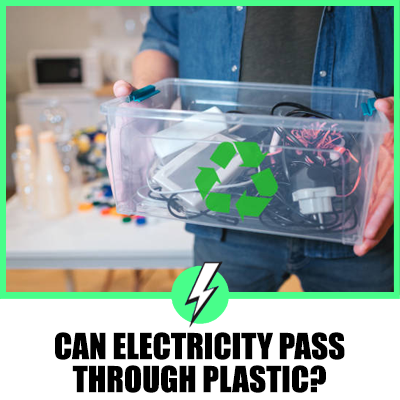Can Electricity Pass Through Plastic? A Comprehensive Analysis for the UK and US Audience
In the realms of science and everyday life, the conduction of electricity through various materials has always been a topic of intrigue.
Both in the UK and the US, with their advanced technological landscapes, the question of whether electricity can pass through plastic is more relevant than ever.
As we dive deep into this topic, we’ll address some of the most frequently asked questions and provide insights tailored for audiences on both sides of the Atlantic.

Contents
Can Electricity Pass in Plastic?
For decades, the general understanding in both the UK and the US was clear:
Metals conduct electricity, while plastics don’t.
This distinction was taught in schools from Birmingham to Boston.
However, groundbreaking research has shown that plastics, under specific circumstances, can indeed conduct electricity.
This revelation was so significant that it led to the awarding of the Nobel Prize in Chemistry in 2000 to Alan MacDiarmid, Hideki Shirakawa, and Alan J. Heeger.
Why Does Electricity Not Pass Through Plastic?
At their core, most plastics are insulators.
This means they do not allow the free flow of electrons, essential for the conduction of electricity.
However, the discovery of conductive polymers has shifted this narrative.
By introducing certain substances, like iodine, to specific plastics, their conductivity can be significantly altered.
Iodine, a strong oxidant, effectively attracts the electrons in the polymer.
This results in the electric charge carriers in the polymer becoming more agile, allowing them to flow similarly to how they would in metals.
What Kind of Material Can Electricity Not Pass Through?
Both in the UK’s bustling cities and the vast landscapes of the US, materials that do not allow the free flow of electrons are termed as insulators.
These include rubber, glass, and most plastics.
However, as previously mentioned, certain plastics, when treated with specific substances, can transition from insulators to conductors.
Can Electricity Flow Through Plastic?
The discovery of polyacetylene, the first plastic known to conduct electricity, was a game-changer.
Its conductive properties were particularly enhanced by the addition of oxidants.
However, these oxidants also reacted with atmospheric oxygen, leading to a reduction in conductivity.
Modern research, both in UK and US institutions, has addressed this challenge.
Today, various highly stable conductive polymers are available, boasting conductivity levels comparable to metals like copper.
Do New Plastics Conduct Electricity?
The world of plastics has evolved dramatically.
Today, there are plastics with electrical conductivity levels that rival traditional metals.
These conductive polymers, researched extensively in both UK and US labs, have found applications in LED technology, efficient displays, solar cells, and more.
Their discovery and significance were so profound that they were recognized with the Nobel Prize in Chemistry, emphasizing the importance of conductive plastics in the modern era.
Insights from Online Discussions:
A Groundbreaking Discovery: The revelation that plastics could conduct electricity was so revolutionary that it led to the awarding of the Nobel Prize in Chemistry in 2000.
This was a testament to the significance of this finding in the global scientific community.
The Role of Chance: Significant discoveries often come from unexpected places.
The discovery of conductive polymers resulted from a small mistake during the synthesis process.
This chance finding led to a series of research and collaborations that changed our understanding of plastics.
Applications of Conductive Polymers: The discovery of plastics that can conduct electricity has opened up a plethora of applications.
From LED technology to efficient displays and solar cells, the potential of these materials is vast and continues to shape industries both in the UK and the US.
Conductivity of Common Materials
| Material | Conductivity |
|---|---|
| Copper | High |
| Silver | High |
| Aluminum | High |
| Plastic | Low |
| Rubber | Low |
| Glass | Low |
In conclusion
While traditionally plastics have been considered insulators, advancements in science and technology have shown that they can be made to conduct electricity.
This discovery has not only expanded our understanding of materials but has also paved the way for numerous technological advancements, impacting industries and consumers in both the UK and the US.
Note: This article incorporates insights from various online sources, including the Royal Society of Chemistry, K-Online, Quora, Earth Eclipse, Scientific American, Europlas, Biotrux, Phys.org, and Wired UK.





